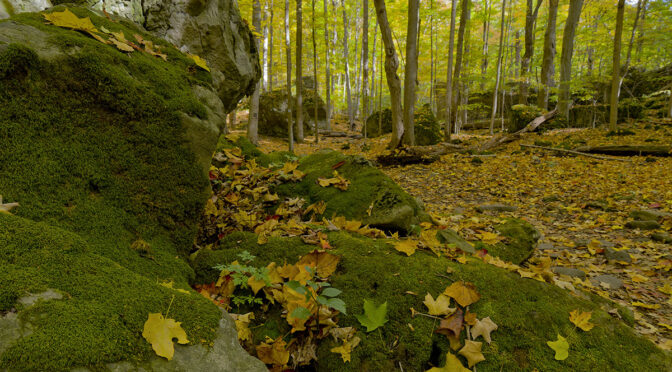This article features a number of forest compositions recently captured handheld at Niagara Glen Nature Centre. It discusses some of the compositional considerations used. As you review the featured images you may find the EXIF data of interest as we’ve included the focusing distance used for various photographs.
NOTE: Click on images to enlarge. If you would like to view this article in a range of other languages click on the Canadian flag in the upper right corner.
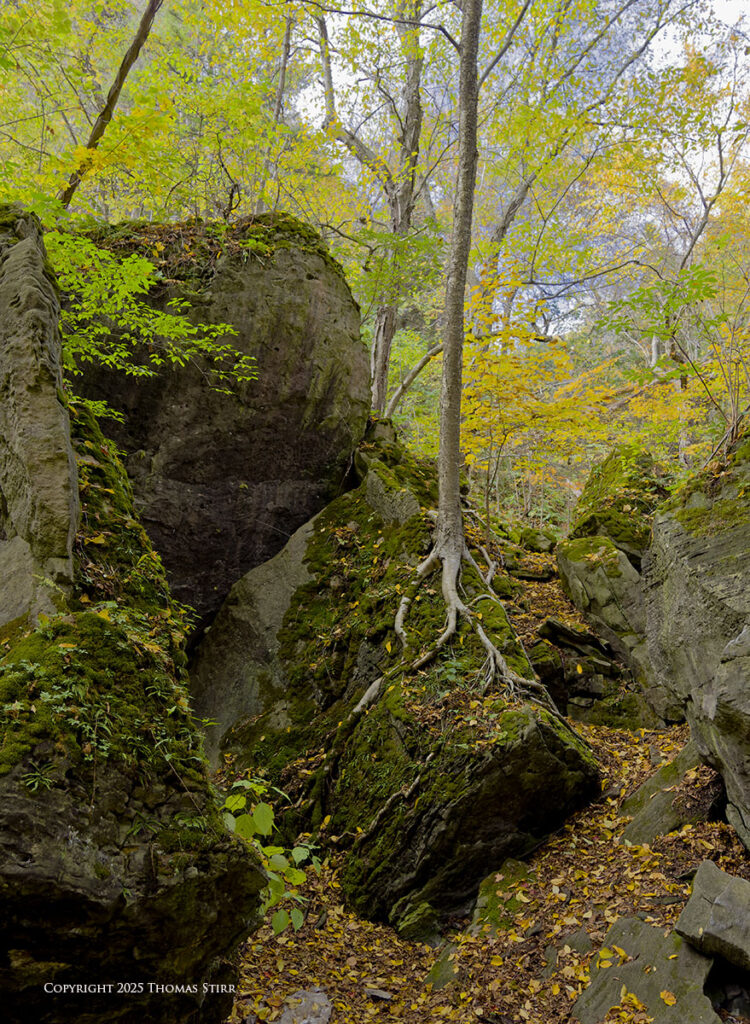
Hiking through forests to create some photographs can sometimes be a challenge. Individual trees seem to get lost visually. Often the stands of trees project a feeling of sameness which can dull our creative spirit. It can be helpful to look at the visual attributes of individual trees, like the exposed roots captured in the above image.
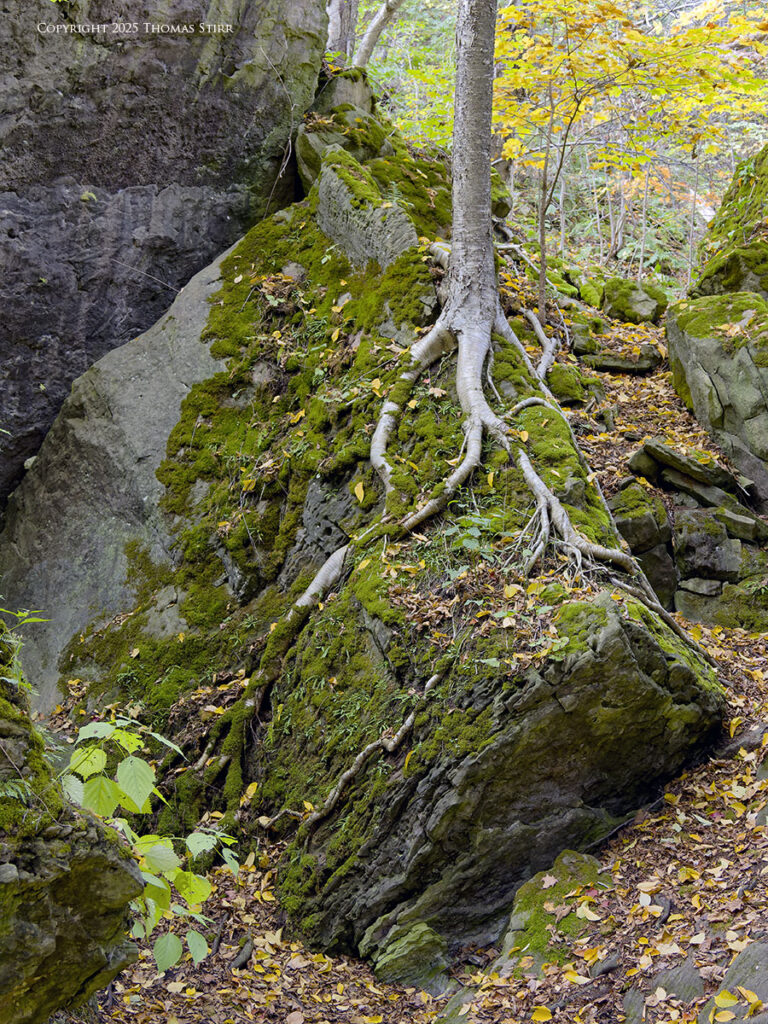
Using a zoom lens that offers a wide range of focal lengths can be helpful to quickly adjust our forest compositions.
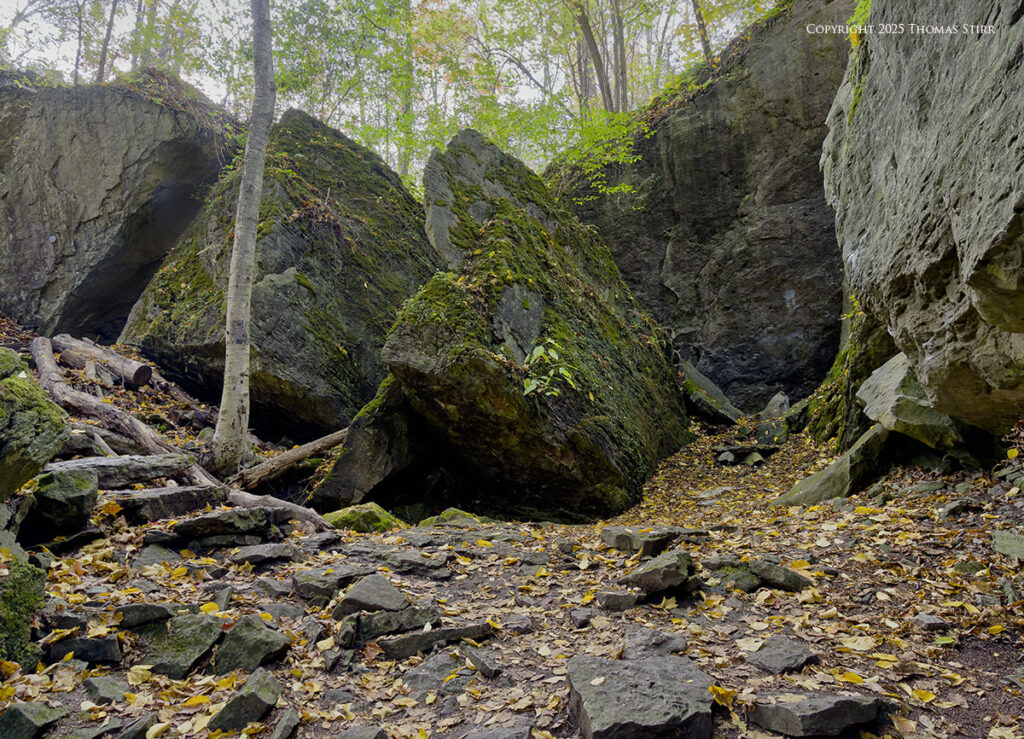
The forest floor is often a jumble of rocks, boulders, fallen branches and other seemingly random items. If we study the positions of these various elements we can sometimes find some subtle eye flow that can help guide a viewer’s eye through out composition.

Looking for interesting foreground elements can create a sense of scale and focus in a forest composition.
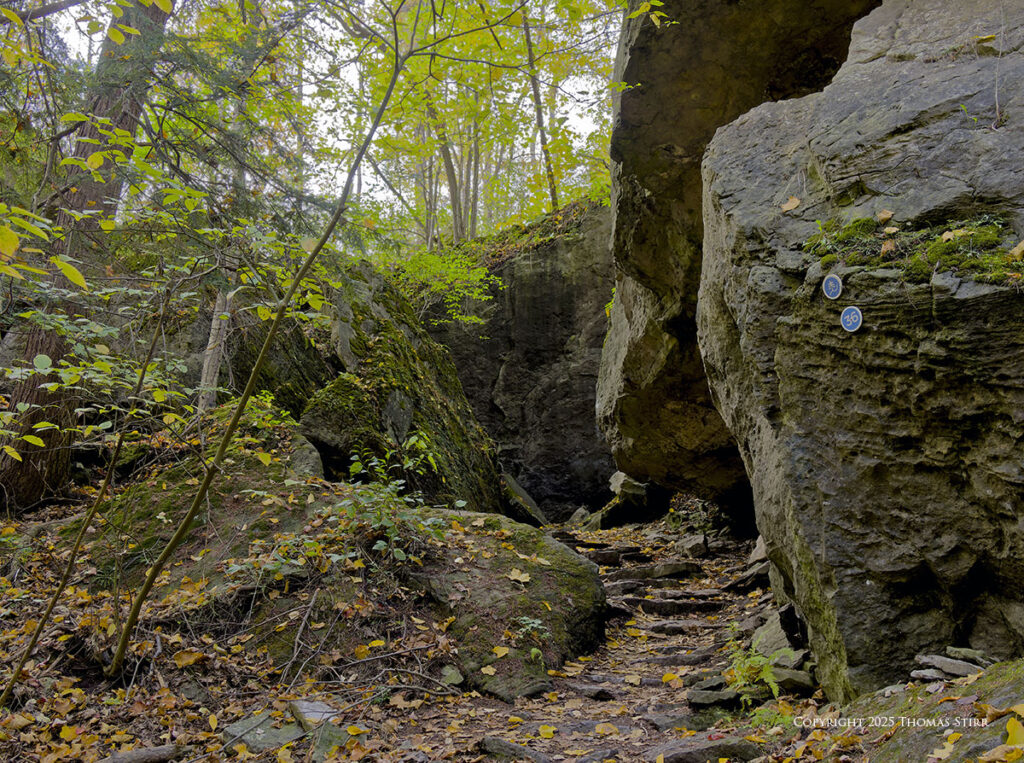
It can be helpful to turn around as we are hiking through the forest to capture images of where we’ve just been hiking. If the location we are visiting has some rough stone pathways, these can be incorporated as leading lines.

We can create eye flow by looking for foreground elements like fallen branches, and adjusting our shooting angle to position them as leading lines. Using a reveal, like the cropped tree trunk on the left hand side, can help to direct eye flow.
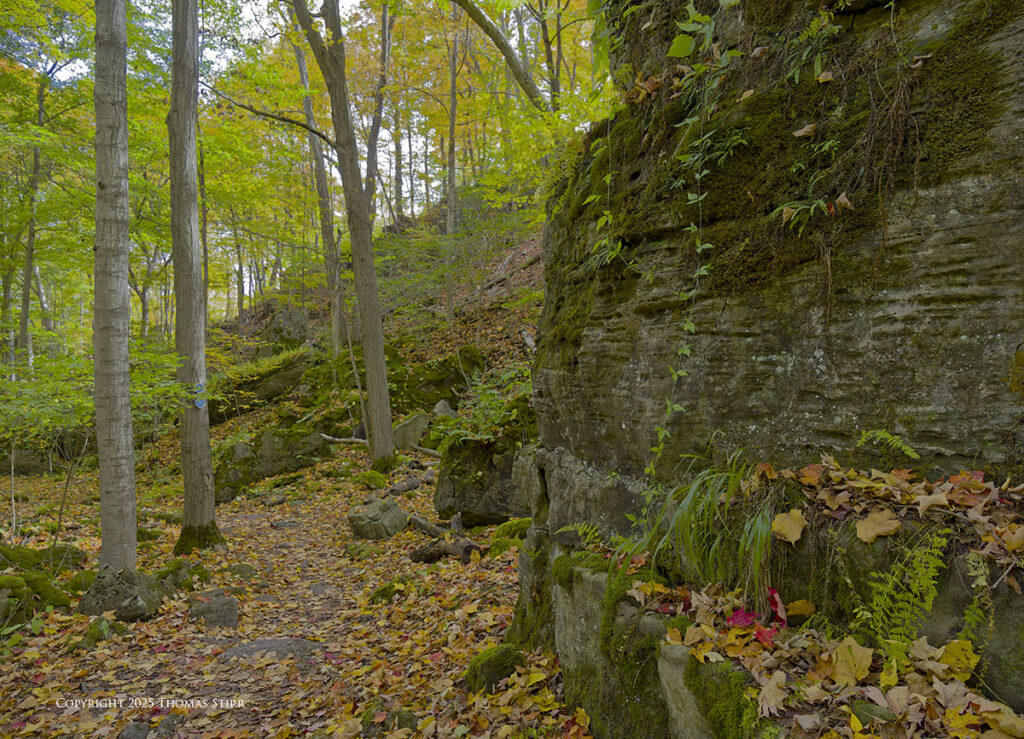
Bringing a short stool with us as we explore forested trails allows us to lower our shooting position comfortably. Getting in tight to a foreground element can help create a feeling of intimacy.
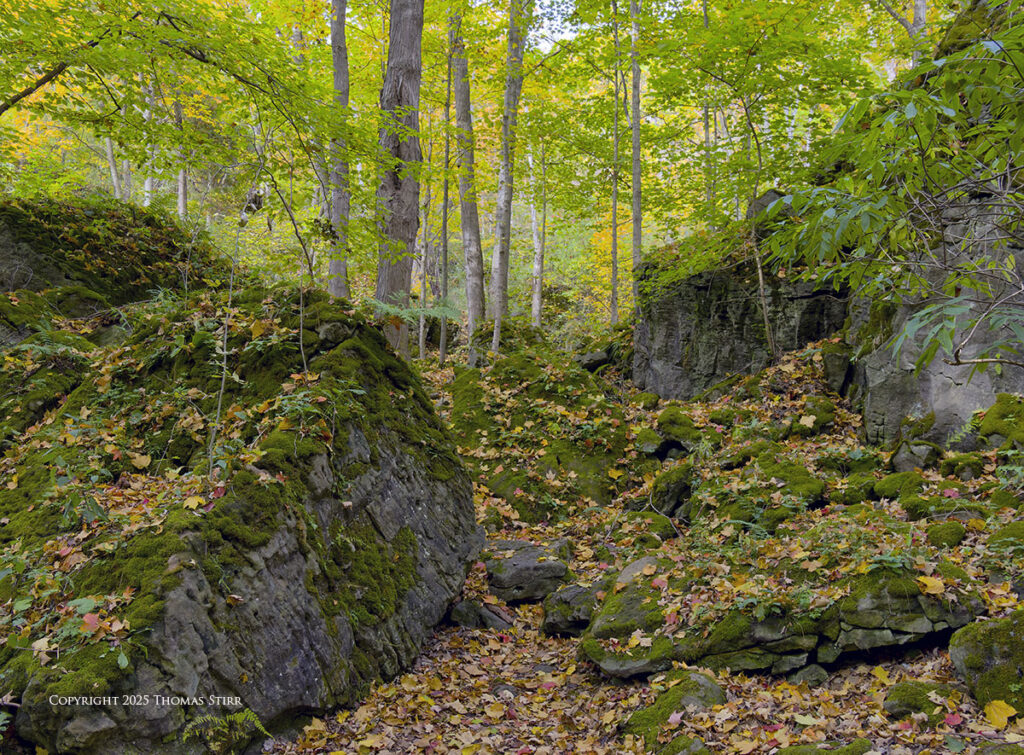
Using ‘soft eyes’ as we walk along paths can reveal interesting geometric shapes, like the two triangles formed by rocks in the composition above.
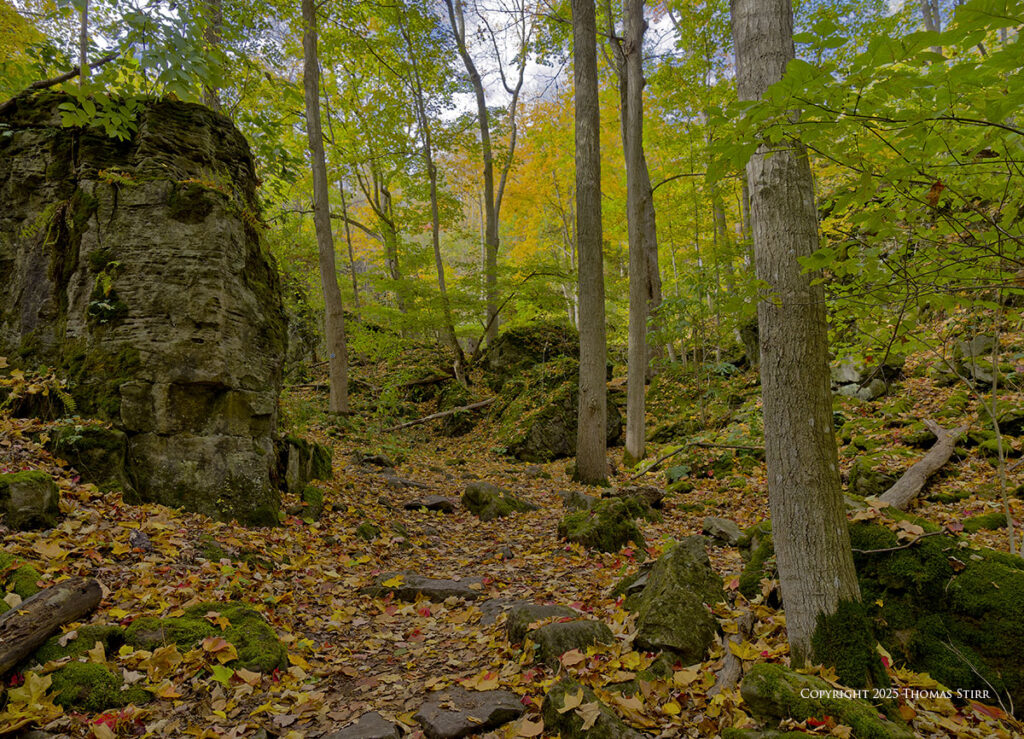
Moving laterally can help reveal natural alignments of trees. These can be used to form a subtle leading line.
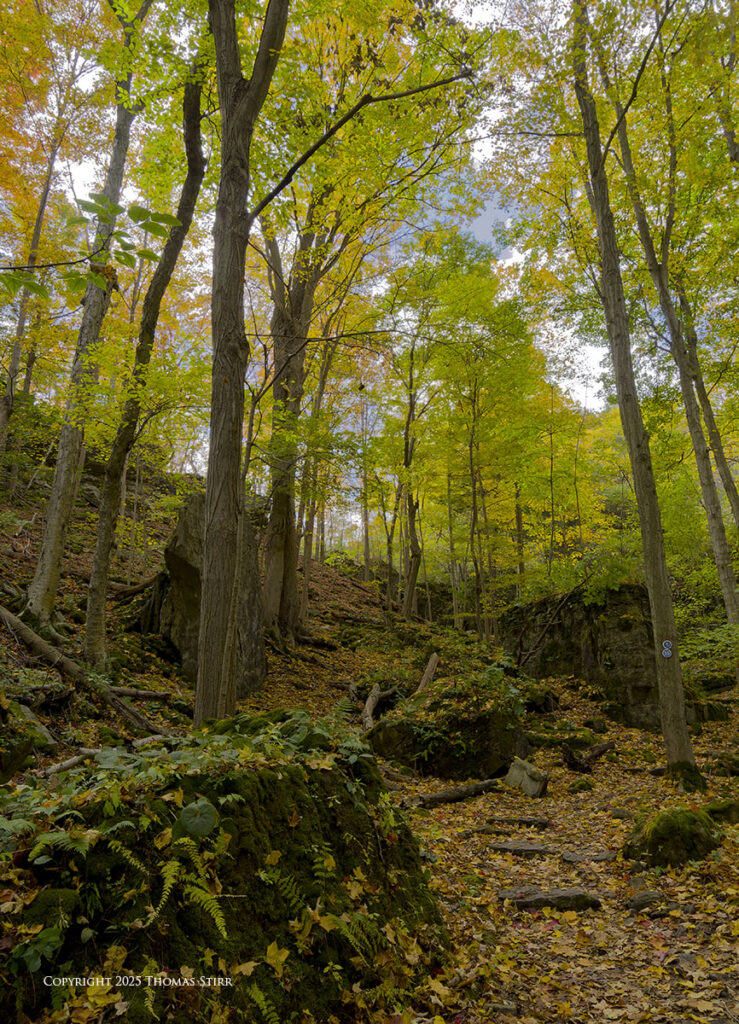
Finding a strong corner anchor, and lining it up with other rocks in a composition can create some drama, a sense of scale, and good eye flow.

Getting down low, and in close, to foreground elements helps create a feeling of intimacy, so our viewers can feel that they are inside our forest compositions.
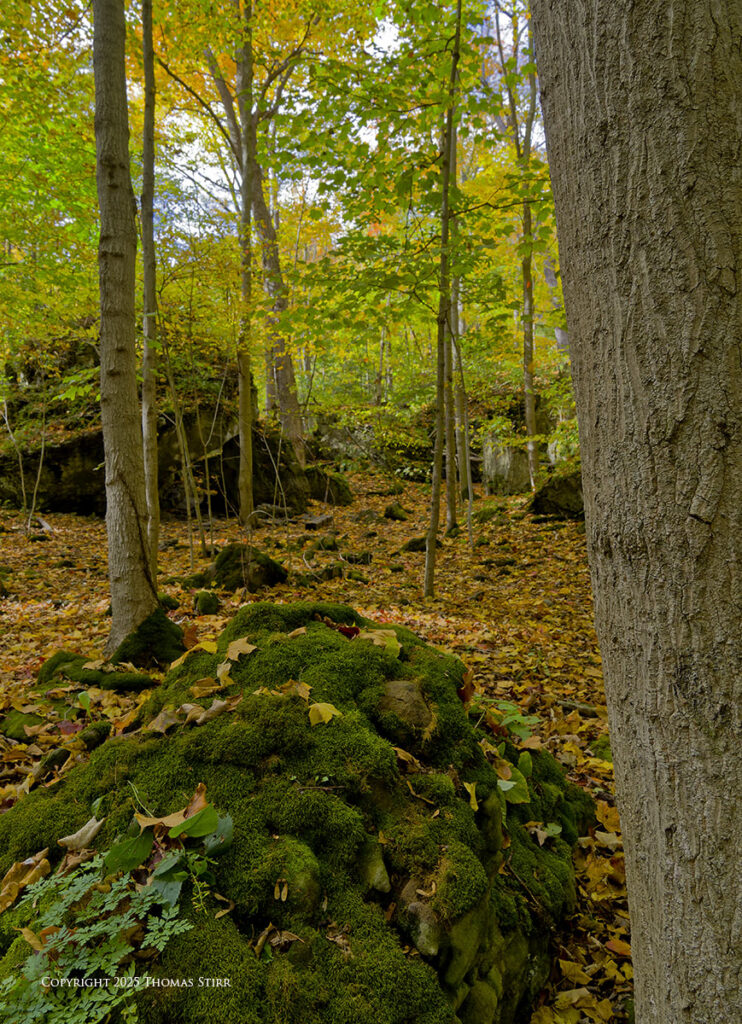
We can move in very tightly to a tree trunk, using it as a reveal for the balance of the scene, and create strong right to left eye flow as illustrated in the photograph above.
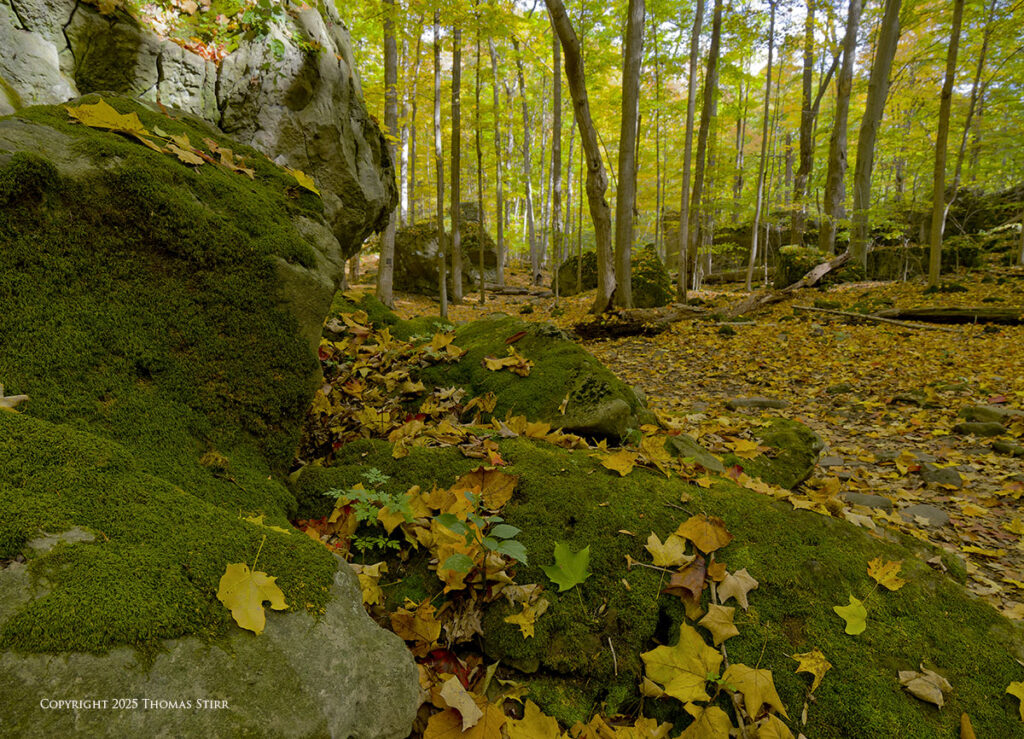
If our cameras have articulating screens we can lower them to almost ground level to create interesting perspectives of the forest floor.
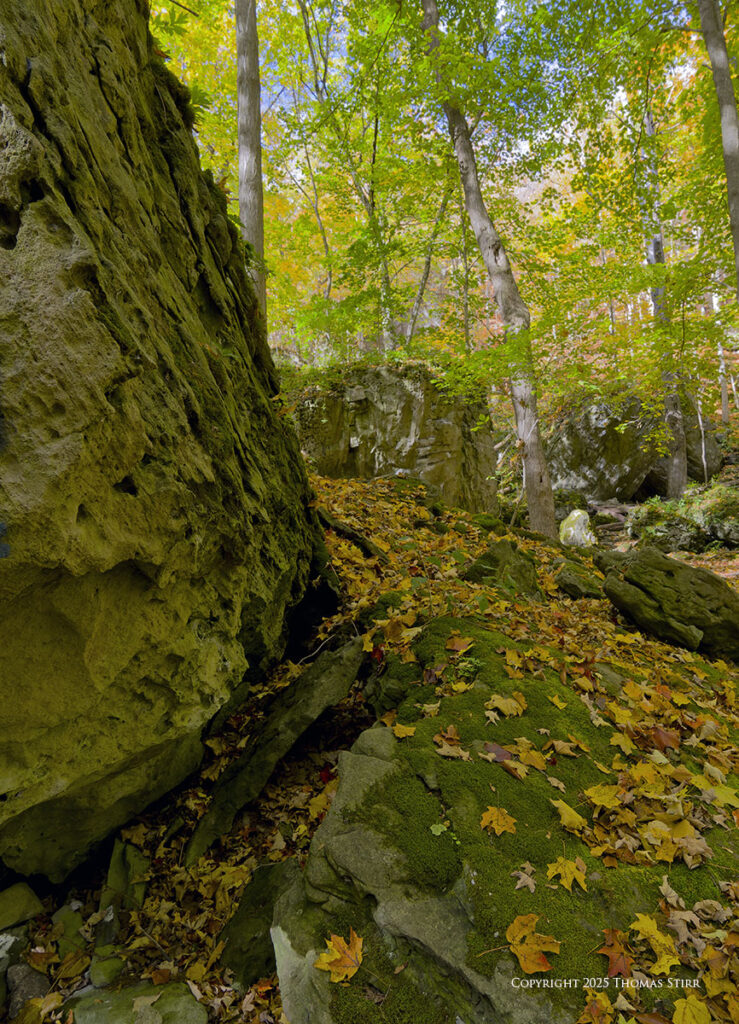
We can look for cracks and breaks in rock formations, using them as leading lines in forest compositions.
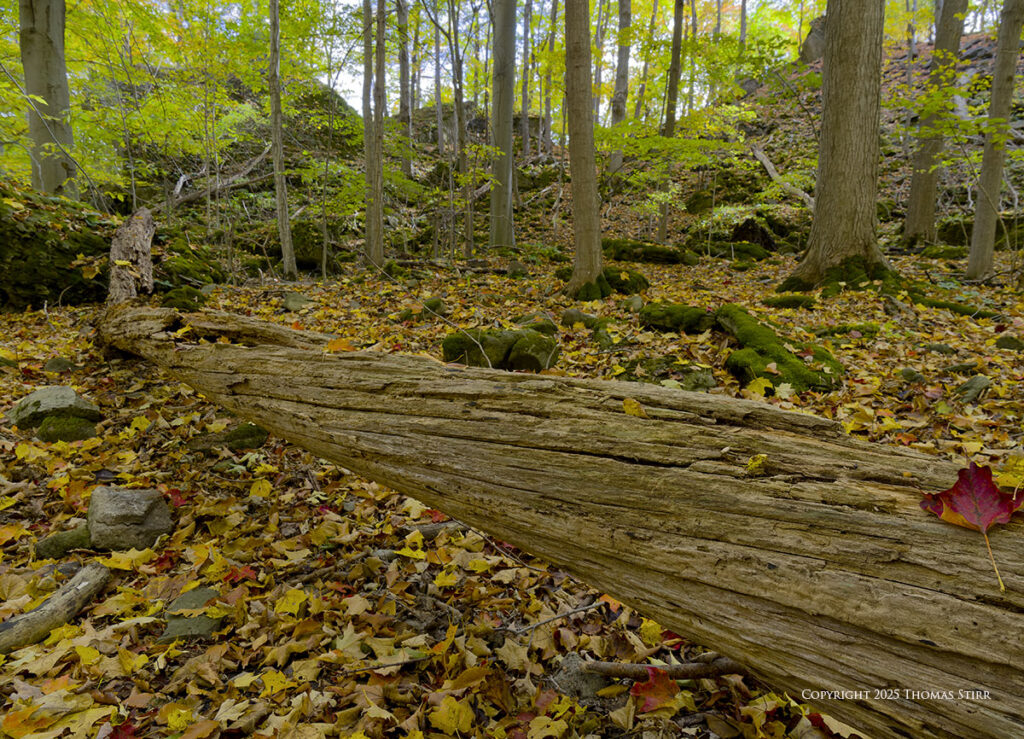
Fallen trees can act as leading lines.

Adjusting our shooting angle and shooting height can help create an overlapping effect and increase eye flow.

We can use somewhat longer focal lengths to visually compress elements and guide a viewer’s eye into our images.
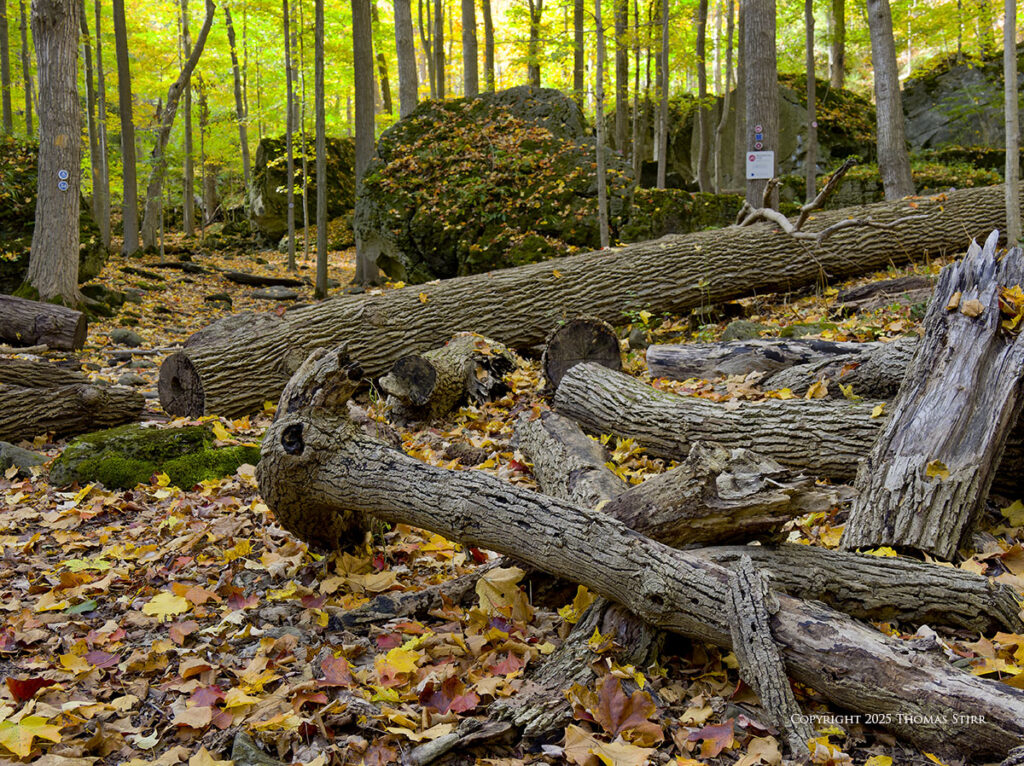
Finding strong geometric shapes like the triangle in this composition, and combining it with a corner exit can create interest and encourage eye flow.
We can look for small details that tell their own stories…


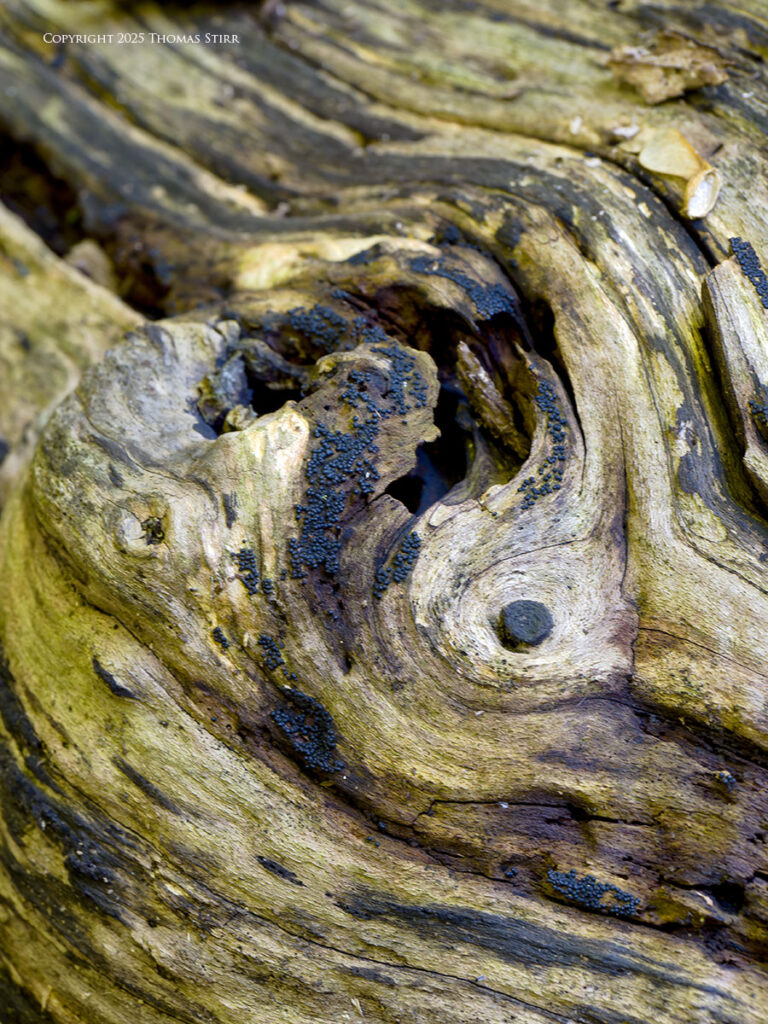
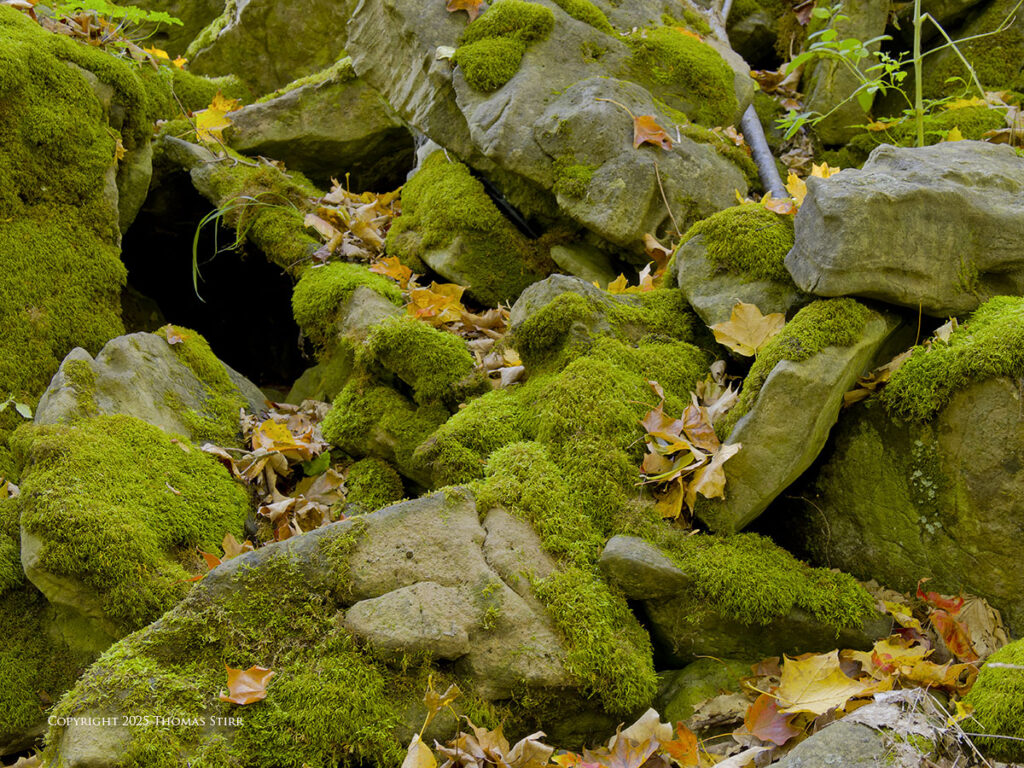
If we open our eyes and our minds, forest compositions can illustrate past trauma.

Have us wonder what awaits around the corner.

And, confirm that our concept of permanence is a relative experience.

Technical Note
Photographs were captured handheld using camera gear as noted in the EXIF data. All images were created from out-of-camera RAW files using my standard process in post. This is the 1,491 article published on this website since its original inception in 2015.
How you can keep this website advertising free
My intent is to keep this photography blog advertising free. If you enjoyed this article and/or my website and would like to support my work, you can purchase an eBook, or make a donation through PayPal (see Donate box below). Both are most appreciated. Sometimes all we need as photographers is a bit of inspiration. We hope you can find some of that inside Finding Visual Expression II.
Finding Visual Expression II is available for download for an investment of $11.99 CDN. The best viewing experience of this eBook will be at 100% using Adobe Acrobat Reader.
You may be interested in all of the 30 concepts covered in both of these related eBooks. If so, you may want to also consider Finding Visual Expression.
Finding Visual Expression is available for download for an investment of $11.99 Cdn. The best viewing experience of this eBook will be at 100% using Adobe Acrobat Reader.
Our other eBooks include Images of Ireland, New Zealand Tip-to-Tip, Nikon 1: The Little Camera That Could, Desert & Mountain Memories, Images of Greece, Nova Scotia Photography Tour, and a business leadership parable… Balancing Eggs.
If you click on the Donate button below you will find that there are three donation options: $7.50, $10.00 and $20.00. All are in Canadian funds. Plus, you can choose a different amount if you want. You can also increase your donation amount to help offset our costs associated with accepting your donation through PayPal. An ongoing, monthly contribution to support our work can also be done through the PayPal Donate button below.
You can make your donation through your PayPal account, or by using a number of credit card options.
Word of mouth is the best form of endorsement. If you like our website please let your friends and associates know about our work. Linking to this site or to specific articles is allowed with proper acknowledgement. Reproducing articles, or any of the images contained in them, on another website or in any social media posting is a Copyright infringement.
Article and images are Copyright 2025 Thomas Stirr. All rights reserved. No use, duplication or adaptation of any kind is allowed without written consent. If you see this article reproduced anywhere else it is an unauthorized and illegal use. Posting comments on offending websites and calling out individuals who steal intellectual property is always appreciated!

